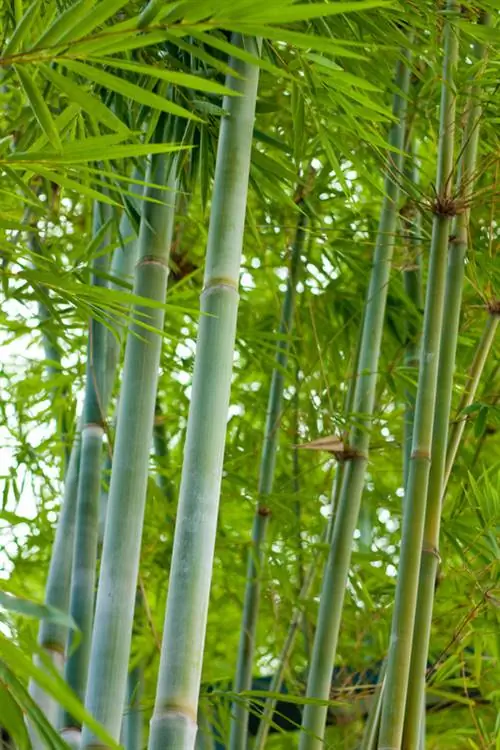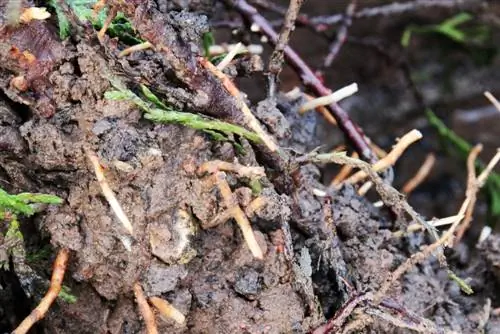- Author admin [email protected].
- Public 2023-12-16 16:46.
- Last modified 2025-01-23 11:22.
You are wondering whether your climbing plants are shallow-rooted or desiccation-resistant deep-rooted. Read in this article which genera belong to it and how to protect them from drying out in summer.

Which climbing plants are shallow-rooted?
Shallow-rooted climbing plants such as kiwi (Actinidia), wisteria (Wisteria), clematis (Clematis), trumpet flower (Campsis), ivy (Hedera), ivy (Epipremnium), tree friend (Philodendron) and window leaf (Monstera) have a radial shape Root system that spreads wide and runs just a few centimeters below the surface of the earth.
What are shallow-rooted climbing plants?
Shallow-rooted climbing plants are plants whose roots spreadwidely, often just a few centimeters below the surface of the earth. Seen from above, they form a radiating root system starting from the trunk. A well-known example is the (non-climbing) buddleia. The opposite are deep-rooted climbing plants such as grape wine (Vitis). Its roots drill down into the depths, where they almost always find water. Deep-rooted plants need to be watered rarely or not at all.
Which climbing plants are shallow-rooted?
The following climbing, twining or tendriling species, for example, belong to theshallow-rooted genera:
- Kiwi (Actinidia)
- Wisteria (Wisteria)
- Clematis
- Trumpet Flower (Campsis)
- Ivy (Hedera)
- Ivy plant (Epipremnium)
- Tree friend (Philodendron)
- Window leaf (Monstera)
Clematis, kiwi and ivy can be planted on the garden fence as a green privacy screen.
What are shallow-rooted climbing plants suitable for?
Climbing plants that do not develop deep roots include: B. ideal for a terrarium. There is a highhumidityhere, so this group of plants can thrive. Another possible use is on properties that haveunderground structures (rainwater tank, bunker, underground cable) that could be damaged by deep roots. Shallow-rooted plants are of course also suitable for garden enthusiasts who love to water their plants frequently and look after them lovingly. Shallow roots are unsuitable for very dry locations and gardeners with little time.
Is wisteria a shallow-rooted climbing plant?
The wisteria (Wisteria) has both shallow roots and deep roots. It forms both a deep taproot and numerous lateral roots that run through the property. When conditions are good, young wisteria plants shoot up from these lateral roots everywhere. An alternative to wisteria could be a deep-rooted climbing rose. This is less likely to spread.
Tip
Protect shallow-rooted climbing plants from drought
Since shallow-rooted climbing plants lack the taproot that draws water from the depths, they need to be watered often. If you want to go on a worry-free summer vacation, you can provide your shallow-rooted plants with the necessary moisture in the soil using an olla (unglazed clay pot). You can get Ollas online. Hobbyists build them themselves from two clay pots sealed with wax.






